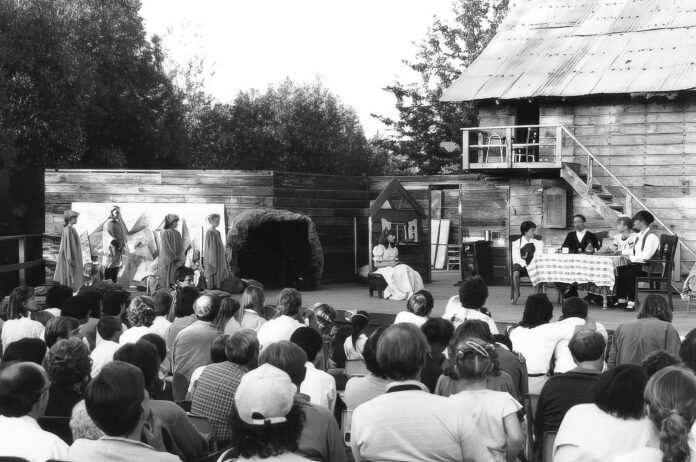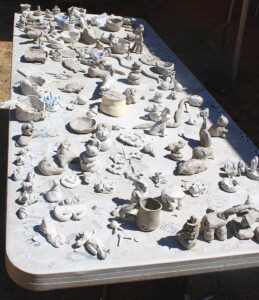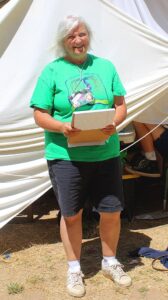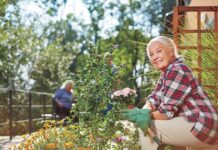
Willowbrook Arts Camp has been one of Tualatin’s crown jewels for 40 years and a staple in Brown’s Ferry Park for the last 30 years, but changes are likely coming in the future.

All the traffic caused by parents dropping off and especially picking up campers in the weekday mornings and afternoons causes congestion in the area for area residents and park users and raises safety issues for not only drivers but also pedestrians and bicyclists; in addition, park users have complained about the camp taking up parking spaces and a large portion of the park for a good part of the summer.
“Over the past five years, we have been working with Willowbrook to develop a set of solutions for these street and safety issues,” said Parks Director Ross Hoover. “We have cooperatively developed a set of options, and we’re asking Willowbrook to implement changes next year that have not been implemented before so Willowbrook can operate safely.
“The city is very open to seeking solutions to ensure the safety of campers, pedestrians and traffic so everyone can access the park and their homes. It is amazing to have this program in Tualatin, and we want it to continue in Tualatin, but it needs to be safe.”
Hoover did not get specific about the “solutions” that have been developed, and Tafflyn Williams-Thomas, director of Willowbrook Arts Camp, would not say if the board intends to comply with them. She said that the board has considered other possible locations, including trying to partner with local churches and the Tigard-Tualatin School District, which offered the use of school properties that didn’t meet their needs.
“We as an organization have asked the parents to look for a property with better parking,” Williams-Thomas said. “The board has come up with a three-year plan to relocate that is supposed to be done by 2026 or 2027,” she said. “Myself and our business manager have looked at properties and surveyed the staff and families about how far they would drive, but the favorite location is Tualatin. But we have found nothing here, so we are going to have to look outside Tualatin.”

The Willowbrook board signs an annual contract with the city that states it will have exclusive use of “the special events area designated within the boundaries of the fenced area as noted on the attached Brown’s Ferry Park map.” The contract adds, “Willowbrook will have non-exclusive use of all of the remaining areas of the park.”
From its simple beginnings, the camp has grown to provide a wide variety of hands-on experiences for campers that has led some of them to careers they would have not otherwise chosen. The camp was the brainchild of Althea Pratt-Broome, who had a degree in education with minors in music, psychology, literature and philosophy and later earned a master’s degree in giftedness and creativity, and worked on a doctorate in education for the development of human potential.
She put all that education and training, along with significant teaching experience, to good use when she started the Willowbrook Center for the Development of Human Potential summer arts program in 1982 at her historic Sweek House property with 25 young students. The camp grew and thrived for 10 years and eventually outgrew the space.
Pratt-Broome’s daughter Rebecca Pratt, who was involved with the camp even before it started, said that in 1992, the city decided the Sweek House property was too small for the 200-plus participating campers. Pratt credits former longtime city parks director Paul Hennon for saving the camp by arranging for it to move to an undeveloped acreage owned by the city that would later become Brown’s Ferry Park.
“Paul said, ‘We have this piece of property to develop as a park,’” she said. “We toured it and started brainstorming. It took a year of planning and preparation.”
Hennon, who was glad to help keep the camp in Tualatin, said, “Along with skills, the camp provides socialization and physical and mental health benefits, and it has a great board. The city is a more desirable place to be because of Willowbrook, and the City Council and city staff have provided a lot of support for the camp, and the community has been very supportive.”
Pratt’s husband, Richard Hall, also played a key role in the physical development of the park, designing the systems, initially bringing in water for campers’ use in plastic pickle barrels, building the stages and sets, purchasing used military tents and so much more.
Over the years, programs and classes were added, and Pratt said that she took over as the director of Willowbrook in August 2007. “My mother was tired,” she said. “She was 85. She walked out the gate after the last performance in 2007 and was done.”
Pratt herself retired from Willowbrook in October 2017. She considers Paul Hennon and Richard Hall the unsung heroes of Willowbrook’s success while also crediting the huge retention of staff and campers.
Enter Williams-Thomas, who joined the Willowbrook Board of Directors in 2014 and after being laid off from her job in 2019 took over as Willowbrook’s director.
She said the program, which went year-round this year, has a permanent staff of two-to-four full-time-equivalent employees. They started hiring the 150 to 160 summer staff members in January, and early enrollment for previous campers opened this year in February and for new campers in March.
Willowbrook is financially self-sustaining and provides some scholarships while charging non-Tualatin residents more than local residents.
“We’re unique in that we’re multi-age and provide arts-driven topics that students get to choose from,” Williams-Thomas said. “The stations (topics) change because of staff availability. Our staff offers different levels of leadership and expertise.”
The camp runs for six weeks each summer, with two additional weeks for set-up and two weeks afterwards for the tear-down. The self-contained Squirrels Nest is for 3- to 4-year-olds, the self-contained Village is for 5- to 7-year-olds, and the rest of the camp is for students age 8 to 18, where multiple large tents house various activities.
This year kids could participate in pottery-making, dancing, weaving, puppetry (complete with a small stage for performances), stained-glass-making, embroidery, up-cycling (making items out of recycled materials), ceramics, spinning, animation, Native American arts (bead jewelry), playing a stringed instrument (cello, violin or viola), playing artisan music (guitar, drums or keyboard), and for the older students, making scenery (stagecraft) and costuming, which are put to good use in the weekly performances.
“We put a cap on the number of students in 2022 because of the traffic, although there has always been a wait for pick-up,” Williams-Thomas said. “We can take a maximum of 530 campers, but this year we have 450 most weeks. We have color-coded drop-off and pick-up times, and the kids are supposed to be ready to be picked up. We have made efforts to make changes each year and looked at other options.”
The proposed contract with the city for 2024 clearly states that there will be no traffic queue on Nyberg Lane, according to Williams-Thomas. “But we are hoping to make inroads with the city and make one more effort to stay in the city where we’ve grown,” she said.
Pratt agrees that finding a desirable location is difficult. “We racked our brains for years and never came up with a solution,” she said.
Williams-Thomas added, “This is what’s worth preserving – the ability to make choices and explore new things.”



















